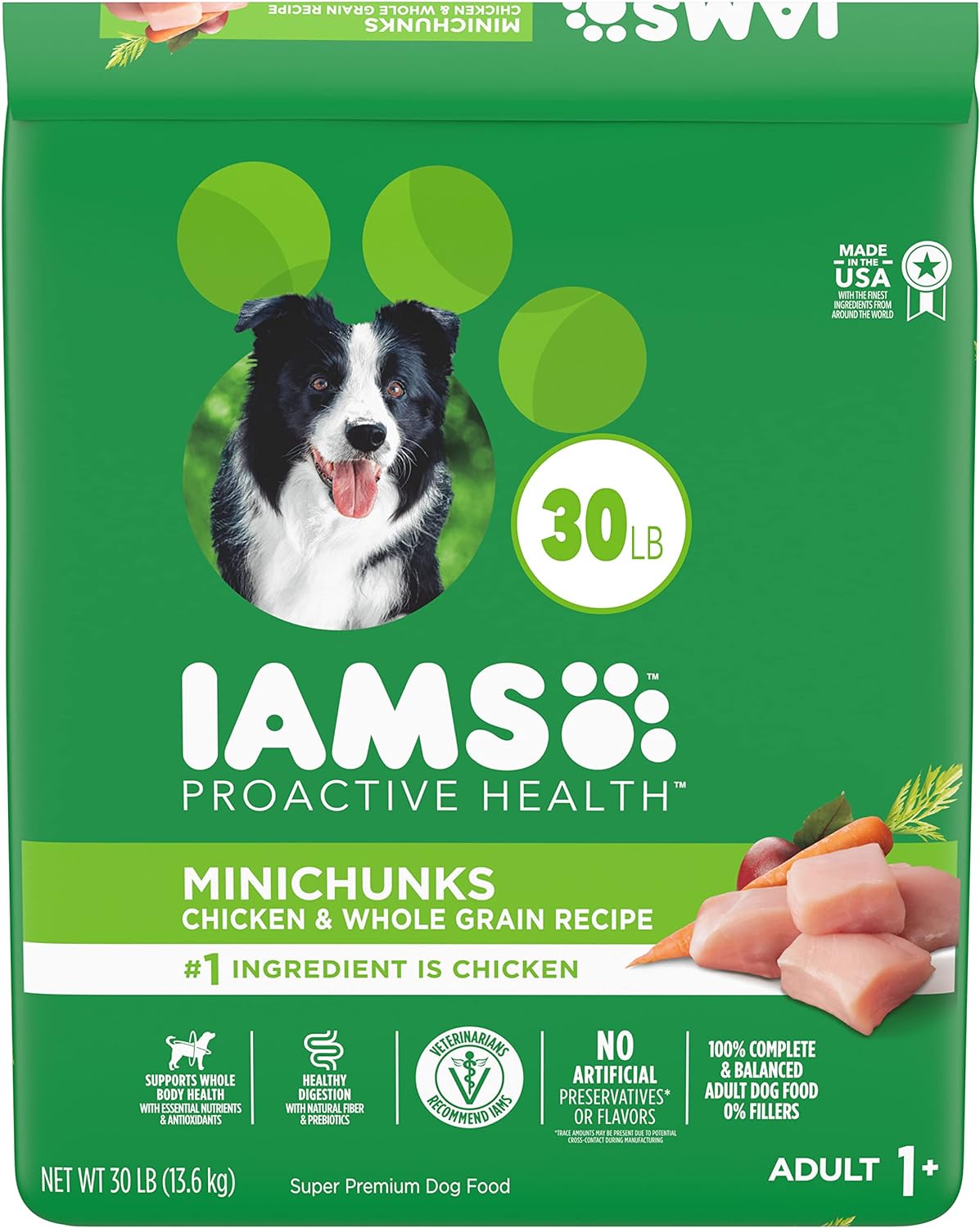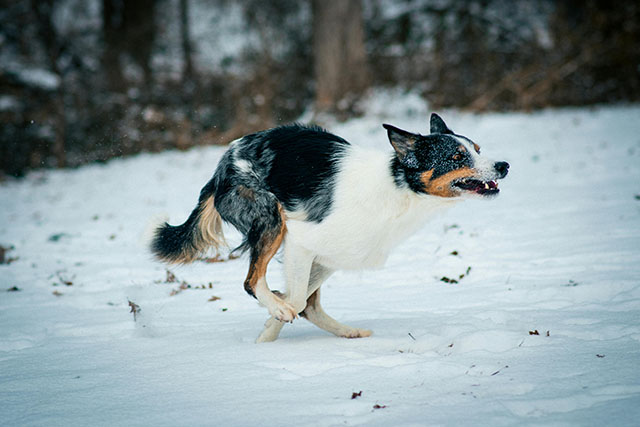If you’ve noticed your dog shaking and acting strange, it’s natural to feel concerned and want to understand what could be causing these behaviors. Dogs can shake for a variety of reasons, some of which are completely normal and others that may require medical attention.
Before jumping to conclusions or panicking, take a moment to observe your dog’s behavior and see if there are any other accompanying symptoms. Here are some possible explanations for why your dog may suddenly be shaking and acting weird.
Why is My Dog Acting Weird and Trembling?
Some common reasons for dogs to shake and act strange include:
- Fear or Anxiety: Just like humans, dogs can experience fear and anxiety, which manifests as shaking or trembling. This can be triggered by loud noises, unfamiliar environments, or separation from their owners.
- Cold Weather: Dogs can get cold, too, and their shaking could simply be a response to lower temperatures. Smaller breeds or those with shorter coats are especially susceptible to feeling chilly.
- Pain or Discomfort: If your dog is in pain, they might shake or act strangely as a sign of distress. This pain can stem from injuries, arthritis, or other health issues.
- Nausea or Digestive Issues: Dogs might shake and act weird if they’re feeling nauseous or have other stomach problems. This could be due to something they ate or a more serious health condition.
- Excitement: Sometimes, dogs tremble or shake out of sheer excitement or anticipation, especially if they’re looking forward to a favorite activity or treat.
- Toxin Exposure: If your dog has been exposed to toxic substances, such as chemicals or poisonous plants, shaking and abnormal behavior could be symptoms of poisoning.
- Neurological Disorders: Certain neurological disorders can cause shaking, twitching, or unusual behavior in dogs. These conditions require prompt veterinary attention.
- Age-Related Issues: In older dogs, shaking or trembling might be related to the onset of age-related conditions, such as cognitive dysfunction syndrome.
Understanding the root cause of your dog’s shaking and unusual behavior is essential in providing the appropriate care and support. If the shaking persists or is accompanied by other concerning symptoms, it’s important to consult a veterinarian for a thorough examination.
Can Food Cause Tremors in Dogs?
Indeed, certain foods can lead to tremors in dogs. This is often related to food items that contain toxins or are inherently toxic to dogs. For example, foods such as chocolate, caffeine, and xylitol (a sweetener found in many sugar-free products) are known to be hazardous for dogs. They can cause various symptoms, including tremors when ingested. Besides the direct toxic effects of some substances, allergic reactions to specific food ingredients may also result in shaking or tremors.
Additionally, overeating or consuming a significantly different diet than usual can lead to stomach discomfort or digestive issues, potentially causing tremors. It’s crucial to be mindful of your dog’s diet and immediately consult a vet if you suspect their food intake might be causing adverse reactions such as tremors.
How Do I Get My Dog to Stop Shaking?
If you find your dog persistently shaking, it’s essential to approach the situation with care and attention. Below are several steps you can take to help your dog feel better and potentially stop shaking:
- Remain Calm: Dogs are highly sensitive to their owners’ emotions. Staying calm can help your dog feel more secure and relaxed.
- Check the Environment: Ensure there’s nothing in the immediate environment causing stress or fear. Remove any stressors if possible.
- Provide Comfort: Offer your dog a warm, comfortable spot to rest. If your dog is shaking due to cold, a cozy blanket like the PAVILIA Waterproof Blanket can make a big difference.
- Eliminate Pain Causes: If you suspect pain, check for any visible signs of injury and consult your vet for a proper diagnosis and treatment plan.
- Avoid Toxic Foods: Be mindful of what your dog eats. Ensure it hasn’t ingested anything toxic, and keep hazardous foods out of reach. Give your furry friends nourishing meals to boost their immune system and promote digestive well-being, such as IAMS Adult Minichunks Small Kibble High Protein Dry Dog Food.
- Consult a Veterinarian: If shaking persists or you cannot determine the cause, it’s crucial to visit a vet. They can conduct a thorough evaluation and address any underlying health issues.
- Offer Reassurance: Sometimes, all a dog needs is a little extra love and reassurance. Spend quality time with them, providing gentle massage using Tilcare Handheld Pet Massager and comforting words.
Remember, while providing immediate comfort is possible, identifying and treating the root cause of the shaking is fundamental to your dog’s health and well-being.
What are the Signs of Anxiety in Dogs?
Anxiety in dogs can manifest in various ways, some of which may be subtle and others more noticeable. Dog owners must recognize these signs to provide their pets with the necessary support and care. Here are some common indicators of anxiety in dogs:
- Excessive Barking or Whining: One of the most apparent signs of anxiety is an increase in vocalization. Dogs might bark or whine excessively when they feel anxious or stressed.
- Pacing or Restlessness: An anxious dog may have difficulty settling down and may pace back and forth or seem unable to stay still.
- Shivering or Shaking: Like humans, dogs can tremble or shake when nervous or scared.
- Destructive Behavior: Anxiety may lead dogs to chew on furniture, shoes, or other items around the house, sometimes in an attempt to relieve stress.
- Avoiding Eye Contact: Avoidance behaviors, like refusing to make eye contact, can be a sign of anxiety in dogs.
- Excessive Licking or Grooming: When they’re anxious, dogs might lick or groom themselves more than usual as a self-soothing behavior.
- Attempting to Escape: Dogs feeling anxious might try to run away or escape from the situation they find distressing.
- Changes in Body Posture: An anxious dog might display submissive body language, such as tucking their tail, lowering their body, or flattening their ears against their head.
- Loss of Appetite: Anxiety can affect a dog’s eating habits, leading to a decreased appetite or refusal to eat.
- Accidents Inside the House: Even if a dog is house-trained, anxiety can cause them to have accidents indoors.
If you notice any of these signs in your dog, it’s important to take steps to understand and address its anxiety. Consulting with a veterinarian or a professional dog trainer can provide strategies and support to help your dog feel more secure and relaxed.
How Long Do Tremors Last in Dogs?
The duration of tremors in dogs can vary significantly depending on their cause. If the shaking is due to exposure to cold, it may last as long as the dog remains in the chilly environment and generally stops once they are warmed up. For tremors caused by fear or anxiety, they might persist for a few minutes to several hours, depending on the dog’s ability to calm down and feel secure again.
However, if the tremors are a result of medical conditions, such as poisoning, neurological disorders, or reactions to certain foods, the duration can be much more prolonged and might not resolve without veterinary intervention. For instance, tremors caused by the ingestion of toxic substances can last until the toxin is fully metabolized and eliminated from the dog’s body, which can vary from several hours to days.
Always consult a veterinarian if your dog’s tremors are prolonged, severe, or accompanied by other concerning symptoms, as prompt medical attention might be required.
Caring for Your Companion During Tough Times
In the journey of caring for our beloved dogs, recognizing and effectively addressing their health issues, including tremors and anxiety, plays a crucial role in ensuring their well-being and happiness.
Dogs depend on us, their trusted humans, to notice when they’re not feeling well and to take action to help them recover. Whether by providing a warm blanket, removing stressors from their environment, or seeking professional veterinary care, our responses to their needs can significantly impact their quality of life.
By staying informed and attentive to the signs of distress or illness, we can make a world of difference in the lives of our furry friends, reaffirming the unbreakable bond we share with them.
Jessica is a veterinary medicine student who is passionate about animals. Living with her cherished dog, Milo, deepens her understanding of the human-animal connection, enhancing her empathy as a future veterinarian.
Jessica’s concise articles reflect her dedication to improving the lives of animals and those who care for them, making her an inspiring figure in the pet care field.







